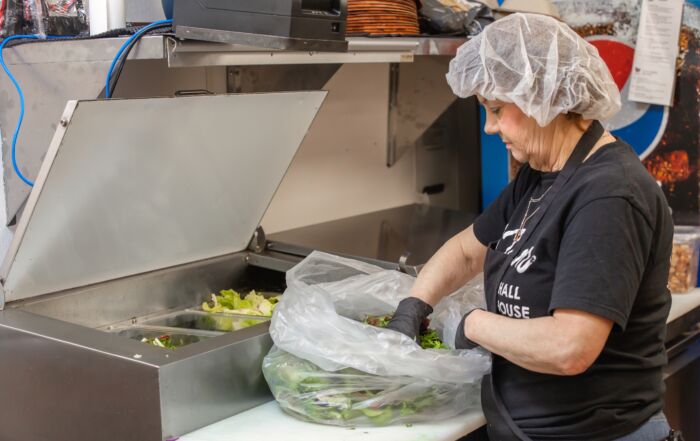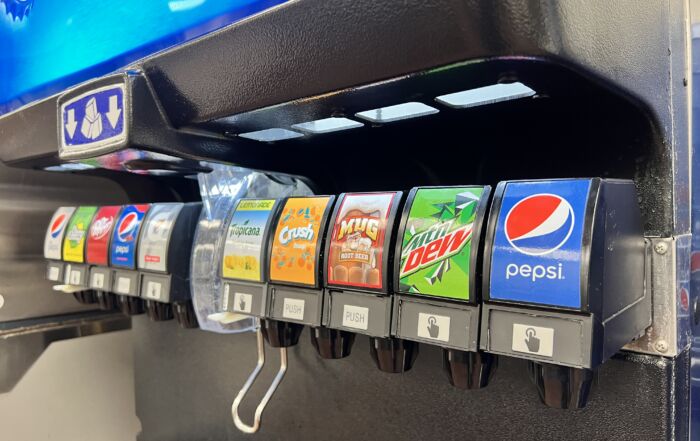Risk-Based Inspections–Risk Nothing®
Every day we make decisions that have a risk component—what happens if we do something and what happens if we don’t? While some of you may be risk takers in some parts of life, risks related to food safety should not be taken because the consequences are too great—the possibility of a foodborne illness causing customers to get sick, and maybe even die, not to mention the negative publicity for the operation. For those of you who read our blogs routinely, you know that we always end with the FoodHandler tagline—Risk Nothing.
In recent years, you probably have noticed a shift in the approach that environmental health specialists are taking with your routine health inspections. Today, most are conducting what are called risk-based inspections. In other words, they are focusing on food handling behaviors that are most likely to cause a foodborne illness, rather than focusing on whether ventilation hoods are in place. You probably have noticed inspectors taking a lot more food temperatures than in the past! Why? Well because it is clear that temperatures are critical when the five broad categories of risk factors that lead to foodborne illness are considered:
- Food from unsafe sources
- Inadequate cooking
- Improper holding temperatures
- Contaminated equipment
- Poor personal hygiene
As a follower of this blog, you may be tired of us continually pointing these out! But it is important to know the risks in order to take precautions.
These categories were identified by the Centers for Disease Control and Prevention based on investigations of the causes of foodborne illnesses. Because they are evidence based, they serve as the foundation for risk-based inspections. If you would like to read more about risk-based inspections, there is an entire section (Annex 5) describing the approach in the FDA Food Code.
During an inspection, inspectors are looking for signs of active managerial control. You may remember that we addressed that subject in an earlier blog . It is only through active managerial control—something that needs to happen on a daily basis—that providing safe food occurs. Inspectors are in operations one or two times a year and they can point out issues, but managers are in the operation almost every day, so it is the responsibility of those in charge to have a comprehensive food safety system that includes continuous monitoring and engages everyone.
We want you to think like an inspector every time you walk into your kitchen! One of the things that the inspector should do early in a visit is to review the menu and preparation procedures. This review identifies high-risk foods (those that are temperature controlled for safety or TCS foods) and complex operational steps that might create a food safety concern. High-risk foods might be items such as poultry, seafood, or ground beef handled from the raw state, or fresh produce items that do not receive a cooking step. An example of a complex process would be a cook-chill item—that occurs when you prepare a food, chill it, and then reheat it when it is ordered from the menu. Going through the heating process requires more trips through the temperature danger zone and that creates a food safety concern because there are increased opportunities for bacterial growth to reach harmful levels. Correct procedures need to be followed for cooking to minimum internal temperature, cooling following the two stage process outlined in the Food Code, and then reheating to at least 165 oF. So, look at your menu and processes and identify the items that you want to make sure you monitor in your operation. If ground beef crumbles were prepared in advance, the beef would be cooked to at least 155 oF, and cooled to below 70 oF within two hours and below 41 oF in an additional four. Once those crumbles are used in a menu item, the items must be reheated to at least 165 oF. Temperatures throughout the process should be documented.
We have developed a SafeFood checklist to help you identify areas in your operation that should be monitored regularly. Think of this checklist as a short version of the risk-based inspection form used by the health inspectors. Our second blog for August will introduce the checklist for the back of the house. We encourage the persons in charge AND staff to become familiar with this tool.
Remember, every action taken to reduce the risk of foodborne illness in your operation just makes good business sense. Having standard operating procedures, training employees on those procedures, and having an on-going process for monitoring critical areas provides the infrastructure for the system. FoodHandler has resources to help! Risk nothing!

Safely Shopping at Farmers’ Markets: A Food Safety Guide for Foodservice Operators and Chefs
Farmers’ markets are an appealing source of fresh, local, and seasonal ingredients for individuals and [...]
Ice Machines, Beverage Dispensers & Other Overlooked Food Safety Hazards
At the end of the spring semester in our campus food production lab, we’re fortunate [...]
What Foodservice Professionals Need to Know about the FDA Milk Testing Changes
In late-April and early-May 2025, headlines across the country and several social media posts stirred [...]
Before They Arrive: Your Health Inspection Prep List
A few weeks ago, I welcomed our local health inspector into a class I was [...]










